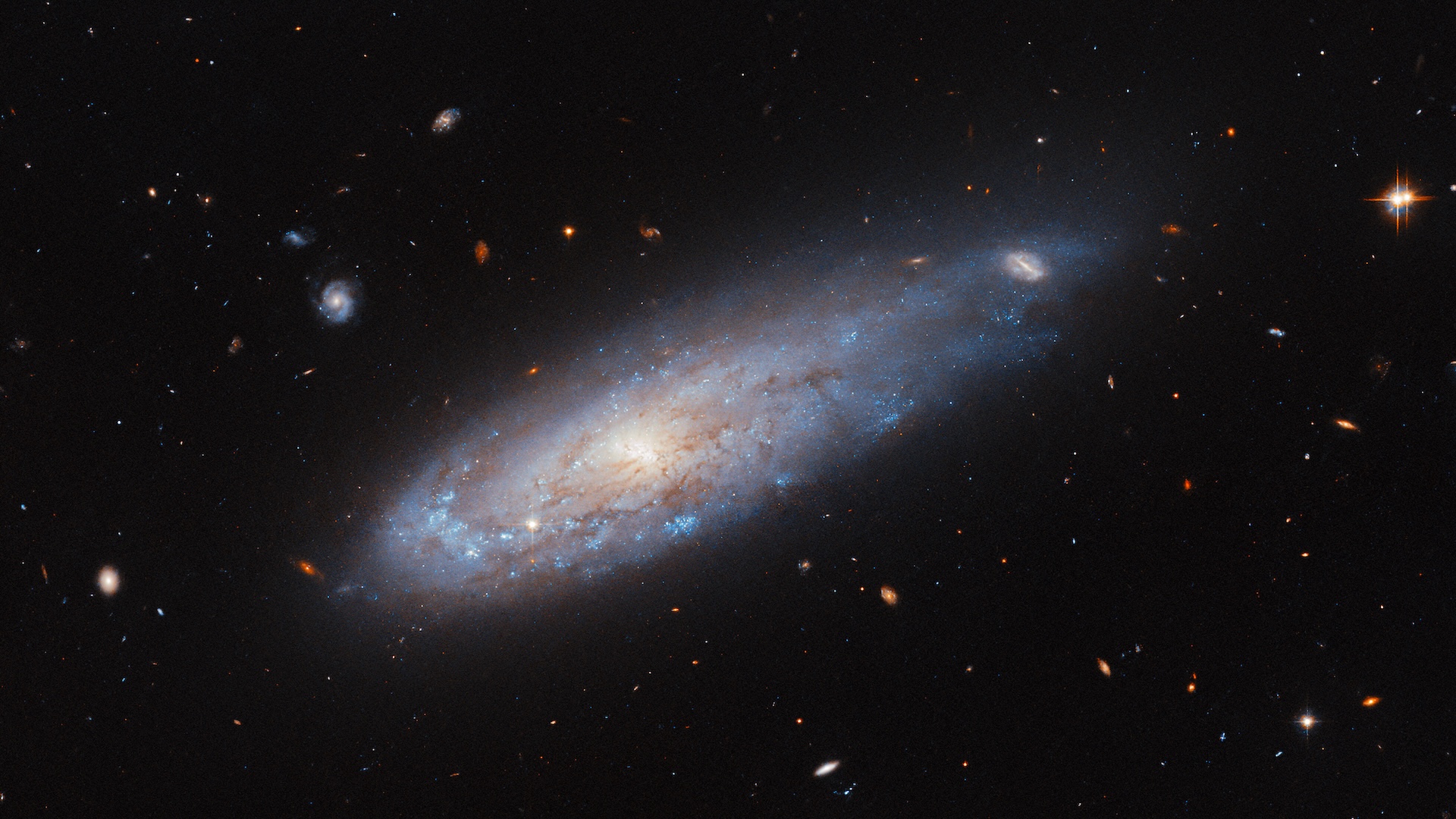
What it is: The spiral galaxy IC 3225
Where it is: 100 million light-years away, in the constellation Virgo
When it was shared: Oct. 21, 2024
Why it's so special: The spiral galaxy IC 3225 looks like it's going somewhere. At first glance, it may seem like any other large spiral galaxy, such as our Milky Way, with its bright, glowing center and faint dust scattered throughout. But all is not well in IC 3225. On one side is a spiral arm dense with new blue stars; on the other is a more diffuse, starless and generally chaotic region that looks like a tail.
According to NASA, which recently shared this Hubble Space Telescope image, IC 3225 looks like it's been launched from a cannon, speeding through space like a comet with a tail of gas streaming behind it. So what happened to IC 3225?
A galaxy may be an island of stars, but they don't exist alone; galaxies are almost always found in groups, which can contain thousands of "islands" held together by gravity.
IC 3225 is one of more than 1,300 galaxies that make up the Virgo Cluster. It's a collection of gravitationally bound galaxies centered in the constellation Virgo.
The concentration of galaxies in the Virgo Cluster is so dense that a rich field of hot gas flows between them as something astronomers call the "intracluster medium," according to Swinburne University. The trouble is, there's so much mass in the Virgo Cluster that galaxies orbit its center very quickly, "ramming" through the intracluster medium. That creates "ram pressure" inside the galaxies, which strips out their gas as they travel. At some point, that happened to IC 3225, which astronomers think has since moved away from the cluster's core.
The debris is clear, with a leading edge of the star-forming region and a somewhat stretched-looking back end. According to NASA, another explanation for the chaos is that IC 3225 was deformed when it passed too close to another galaxy and the gravitational forces stretched it out.
Remarkably, the Virgo Cluster and its 1,300 galaxies have more than 100 other groups of galaxies orbiting it. Together, they are known as the Virgo Supercluster (or Local Supercluster) of galaxy groups, which stretches 100 million light-years across. In turn, the Virgo Supercluster is part of a larger structure of galaxy clusters called Laniakea, Hawaiian for "immense heaven." It contains about 100,000 galaxies, according to Space.com.
For more sublime space images, check out our Space Photo of the Week archives.







